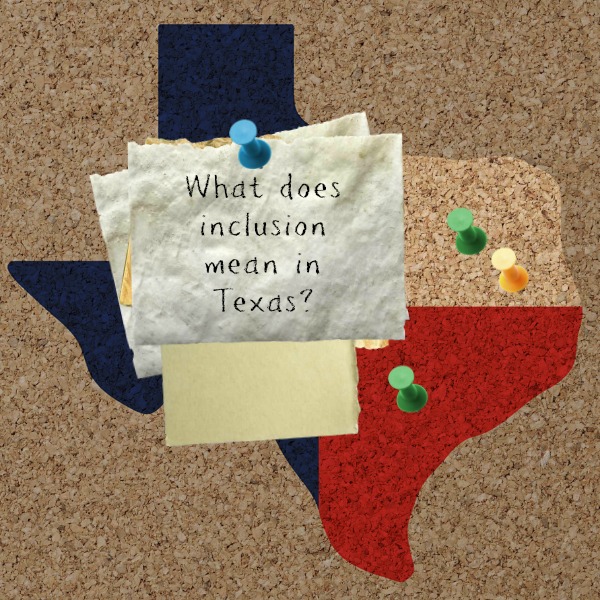“Schools that describe themselves as having “full inclusion” are often referring to where students sit rather than to the beliefs of the educators providing services.” Somewhere along the line, in Texas, inclusion has also come to be understood as a service-delivery model rather a “belief system that values diversity and fosters a shared responsibility to help all students to reach their potential.” This lack of common understanding and common language has created a “mine” and “yours” ideology that has driven a stake between regular education teachers and special education teachers instead of uniting them in the common goal of providing all students with “free and appropriate education in the least restrictive environment” possible. Some of the confusion appears to be rooted in the the myths of inclusion and the lack of understanding of service-delivery models.
Inclusion is rooted in PL 94-142, also known as Individuals with Disabilities Education Act of 1975, or IDEA. In 2002, when No Child Left Behind was signed into law, school accountability for closing the achievement gap for students with disabilities came into the spotlight. Discussions about the meaning of Least Restrictive Environment (LRE), language used in the IDEA, were reignited. The IDEA 2004 LRE Mandate states the IDEA requires that “to the maximum extent appropriate, children with disabilities, including children in public or private institutions or other care facilities, are educated with children who are not disabled, and special classes, separate schooling, or other removal of children with disabilities from the regular educational environment occurs only when the nature or severity of the disability of a child is such that education in the regular classes with the use of supplementary aids and services cannot be achieved satisfactorily.” 20 U.S.C. ‘1412(a)(5)(A).”
Texas considers these factors when deciding what level of inclusion to provide for a student with disabilities:
- Has the district taken steps to accommodate the child with disabilities in regular education?
- Were these efforts sufficient or token?
- Will the child receive an educational benefit from regular education?
- What will be the child’s overall educational experience in the mainstreamed environment, balancing the benefits of regular and special education?
- What effect does the disabled child’s presence have on the regular classroom environment?
Inclusion is not co-teaching, and the two are not mutually exclusive. The are directly related, but they are not the same thing. If inclusion is the belief system that we embrace as a means for providing all students with the opportunity to achieve at the highest level possible, co-teaching is the model for delivery of service. And a highly effective model, at that. It is becoming apparent that this fundamental semantic breakdown is hindering the progress of effective service-delivery models in public education here in Texas.










